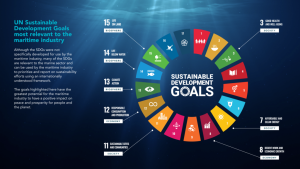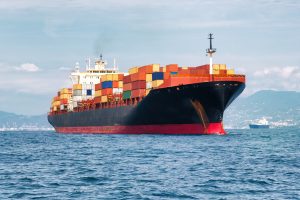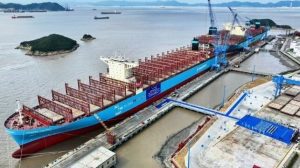In a groundbreaking new study, Clear Seas, in collaboration with the Association of Canadian Port Authorities and Green Marine, has mapped the sustainability initiatives of the Canadian maritime industry to the United Nations Sustainable Development Goals (UN SDGs).
The research provides an overview of how UN SDGs are currently being applied in the maritime industry and identifies those SDGs most relevant to maritime sustainability initiatives. The outcome of this research is to provide companies with a mapping tool that will support future reporting on their diverse sustainability efforts in alignment with the global goals.
The study, titled Mapping Canadian Maritime Industry Initiatives to UN Sustainable Development Goals, analyzed existing reports and sustainability metrics to identify how the 17 UN SDGs relate to the maritime sector and are being incorporated into current reporting efforts.
Green Marine’s newest performance indicator, Aquatic Ecosystems, which applies to ports, has the greatest correlation with SDGs, with 16 targets from 9 different SDGs that are linked to the various criteria of the indicator. The Air Emissions – Greenhouse Gases performance indicator is the second one with the greatest correlation with a total of 13 targets from 10 different SDGs linked to this indicator.
Key findings from the research include:
- Significant Alignment: The research revealed that eight UN SDGs, including those focused on environmental protection, health, and economic growth, are most relevant to the maritime industry.
- Green Marine’s Contribution: Green Marine’s certification program was found to contribute to 11 out of the 17 UN SDGs, demonstrating its effectiveness in driving sustainability initiatives.
- Global sustainability framework: The UN SDGs represent a global framework that can guide Canada’s ports in further developing sustainability frameworks and approaches.
- Extensive SDG Adoption: The study observed over two-thirds of Canadian maritime companies referenced the SDGs in their sustainability reporting.
“This research provides a valuable roadmap for the maritime industry to align its sustainability efforts with the global agenda,” said Paul Blomerus, Executive Director of Clear Seas. “By understanding the relevance of the UN SDGs and the role of Green Marine’s certification, organizations can make informed decisions and report on their progress more effectively.”
“While the correlations between Green Marine’s environmental performance indicators and the SDGs may look straightforward now, it took a lot of diligence to ensure this ‘mapping’ was done properly,” says David Bolduc, Green Marine’s president and CEO. “I really appreciate the extensive research that Clear Seas did with our program manager Véronique Trudeau to ultimately simplify these benchmarks for everyone.”
“With safety and community engagement fundamental aspects of their mandates, Canada’s Port Authorities (CPAs) have been leaders in sustainability, with all 17 CPAs early and long-term supporters of Green Marine,” said Daniel-Robert Gooch, President and CEO of the Association of Canadian Port Authorities (ACPA). “This research provides an important baseline of publicly communicated efforts by ports and marine stakeholders to use UN SDGs in their sustainability efforts.”

For details consult www.clearseas.org
(Images from Clear Seas)








